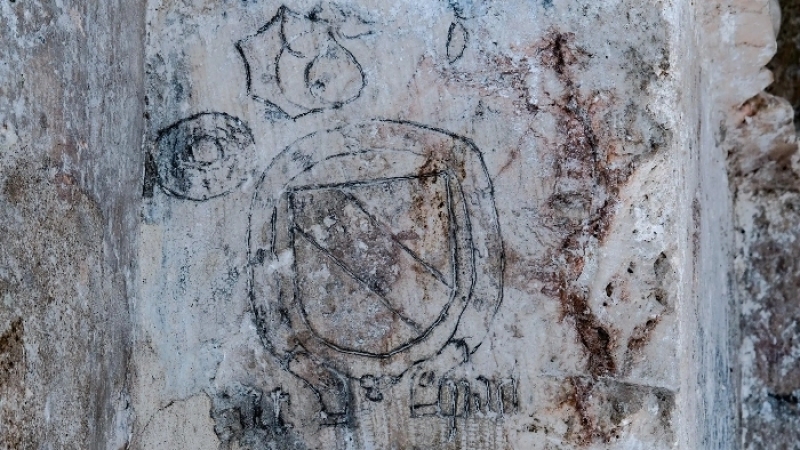
A team of researchers and archaeologists has uncovered a series of centuries-old inscriptions within the Cenacle in Jerusalem.
Researchers from the Austrian Academy of Sciences (ÖAW) and the Israel Antiquities Authority (IAA) discovered nearly 40 elements that could be classified as ancient graffiti located in the Room of the Last Supper on Mount Zion. The findings, recently published in Liber Annuus, include 30 inscriptions and nine drawings on the walls of the room, as reported by CBN News.
Archaeologist Amit Re'em shared insights about the sophisticated methods used for the discovery, stating to CBN, “Using ground-penetrating radar, laser measurement, laser scanning, and an advanced photography technique, we managed to reach every corner of the Last Supper room. We managed to create an accurate 3-D model of the place. We even managed to penetrate inside the ancient stones.” He noted the presence of symbols such as the "Lion of Judah" and "Agnus Dei," which represents Jesus.
Ilya Berkovich, a co-author from the Austrian Academy of Sciences, explained that the graffiti offers new information about the geographical diversity and the international pilgrimage movement to Jerusalem during the Middle Ages. He remarked, “When put together, the inscriptions provide a unique insight into the geographical origins of the pilgrims. This was far more diverse than current Western-dominated research perspective led us to believe,” according to Scinexx.
The discoveries indicate that Christians have visited the site between the 14th and 16th centuries, leaving messages in their native languages.
Scholars suggest that one inscription was written by a Christian woman from Aleppo, while another inscription bears the name of Johannes Poloner from Regensburg in Germany. Additionally, a coat of arms was found belonging to Tristram von Teuffenbach, a Styrian nobleman who traveled with Archduke Frederick of Habsburg in 1436, and an inscription from Swiss knight Adrian I von Bubenberg, known for defending Bern, was also discovered.
Researchers uncovered an Armenian inscription reading “Christmas 1300,” which, along with its markings and location, is associated with Armenian nobles. According to the Jerusalem Post, this discovery adds credibility to the theory that King Het'um II of Armenia and his troops reached Jerusalem following their victory at the Battle of Wādī al-Khaznadār in Syria on December 22, 1299.

















